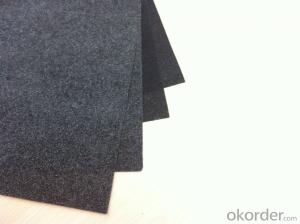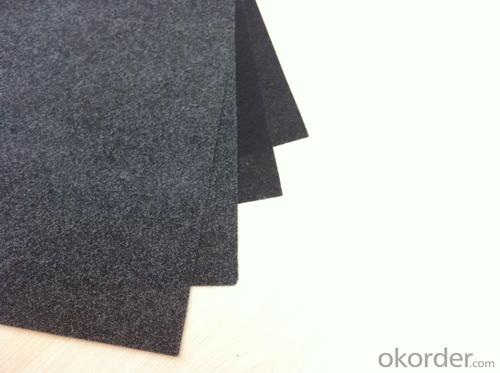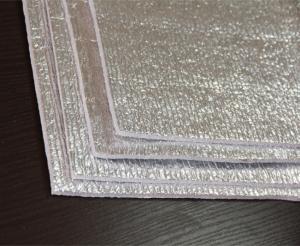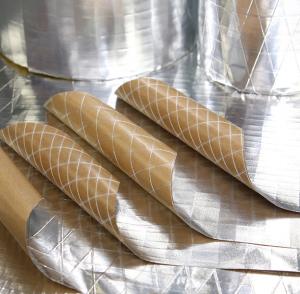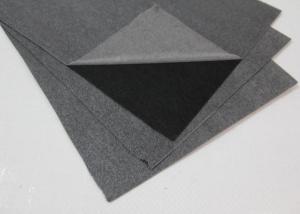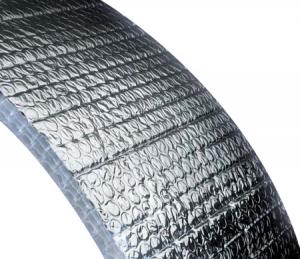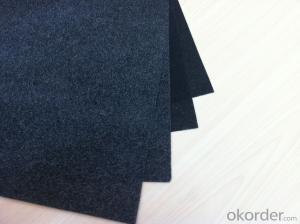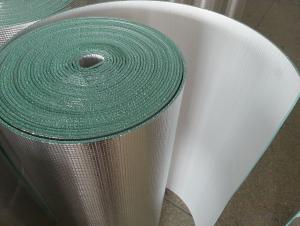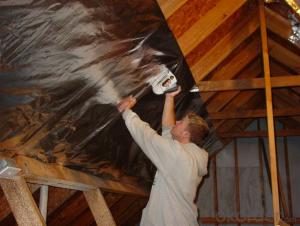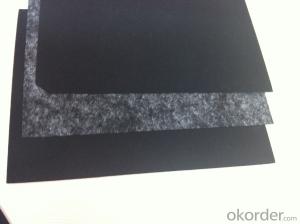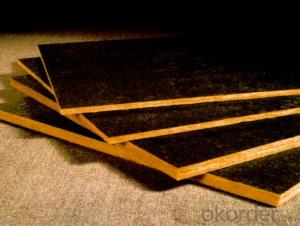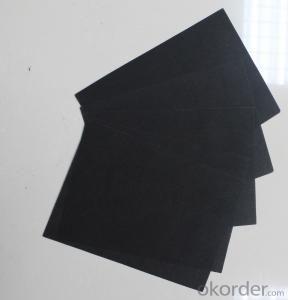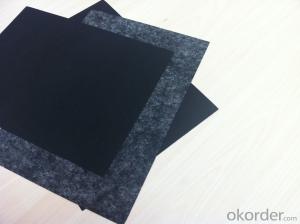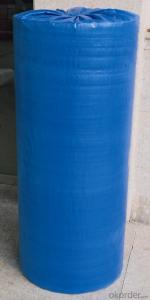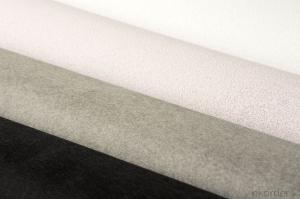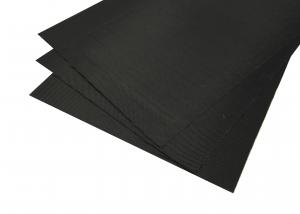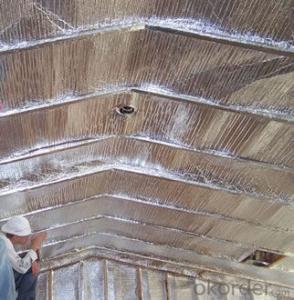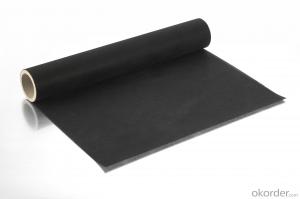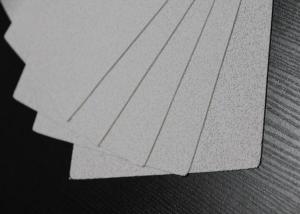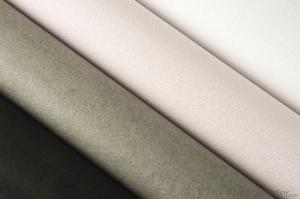60gsm E Class Black Fiberglass Facing Tissue-60E
- Loading Port:
- Shanghai
- Payment Terms:
- TT OR LC
- Min Order Qty:
- 500 m²
- Supply Capability:
- 100000 m²/month
OKorder Service Pledge
OKorder Financial Service
You Might Also Like
Black Spraying Coating Fiberglass Tissue
Fiberglass Tissue is a kind of facing, which is made of by the white fiberglass tissue, and special production process.
Our black tissue are mainly used as facing for glass wool insulation, rockwool, mineral wool etc. Also fiberglass tissue facing is used under roof decking, under attic rafters, over existing attic thermal insulation, in floors, walls and crawl spaces, and in industrial and commercial buildings
Advantage of Blace Spraying Coating Fiberglass Tissue
Light weight
• High manufacturing accuracy
• High strength
• Small inertia resistance
• Strong heat dissipation ability
• Good visual effect
• High reflective insulation
• Heat resistant, water proof, stable at high temperature;
• Environmentally friendly, no smell and not-toxic;
• Smooth and clear surface;
Fiberglass Tissue Application
building reflective heat, cold and hot water pipe insulation;
refrigerator partition, central air conditioning, refrigerator and household appliances insulation;
insulation, sound-absorbing, noise reduction and moisture-proof insulation in the car, train, refrigerator car, laboratory and other industries;
special product packaging and refrigerated packing and so on
Packing of Blace Spraying Coating Fiberglass Tissue
1. Waterproof paper then PVC shrinking Film
2. Water-Proof film only
3. Woven cloth
4. Kraft paper or Water Proof Film then Metal/wooden pallet
5. (Also as your request. )
Specification of Fiberglass Tissue
PROPERTIES | UNIT | VALUE | TEST METHOD |
Basic weight | gsm | 105 | ASTM D646 |
Tensile strength: M. D. X. D. | N/25mm | 140 60 | ASTM D828 |
Burst strength | N | 40 | ASTM D774 |
Reflectivity of foil surface | % | 95 | ---------- |
Temp. Resistance | -29°C 66°C | No Delamination No Delamination | ASTM C1263 |
Water vapor permeance | ng/N.s | 1.15 | ASTM E-96 |
Pictures of Black Spraying Coating Fiberglass Tissue
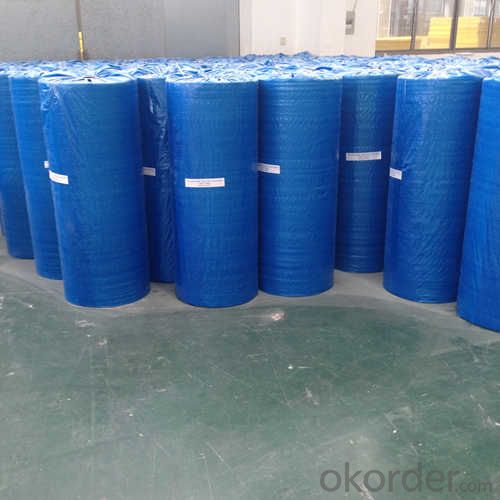
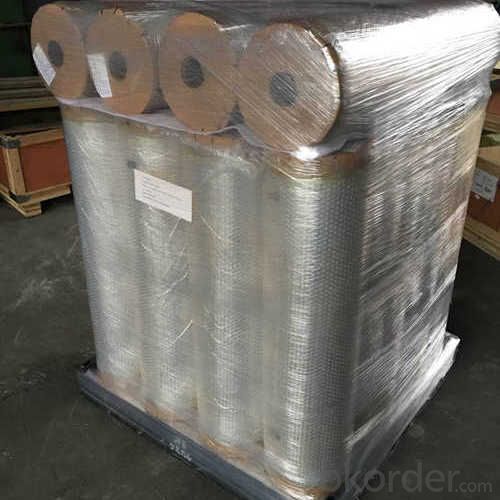
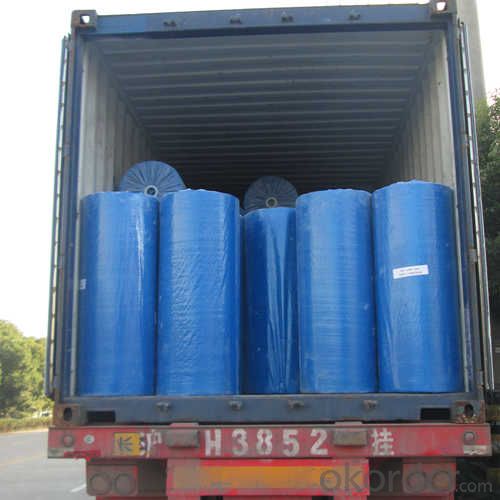
FAQ
We have organized several common questions for our clients,may help you sincerely:
1. What is the storage condition?
The Aluminum Foil Facing should be stored at room temperature and kept from wet and heat source.
2. How to guarantee the quality of the products?
We have established the international advanced quality management system,every link from raw material to final product we have strict quality test;We resolutely put an end to unqualified products flowing into the market. At the same time, we will provide necessary follow-up service assurance.
3. How long can we receive the product after purchase?
In the purchase of product within four working days, we will arrange the factory delivery as soon as possible. The specific time of receiving is related to the state and position of customers. Commonly 7 to 10 working days can be served.
- Q: How does fiberglass facing contribute to energy efficiency in buildings?
- Fiberglass facing plays a crucial role in enhancing energy efficiency in buildings. This material is typically used as insulation, providing a barrier to heat transfer and reducing the amount of energy needed to maintain a comfortable indoor temperature. One of the primary ways fiberglass facing contributes to energy efficiency is through its high thermal resistance or R-value. The R-value measures the resistance to heat flow, and fiberglass insulation with facing has a higher R-value than materials without facing. This means that it can effectively prevent the transfer of heat between the inside and outside of a building, reducing the need for excessive heating or cooling. Furthermore, fiberglass facing helps to create an airtight seal when installed properly. This prevents the infiltration of drafts or air leaks, which can significantly impact energy efficiency. By sealing off these gaps, fiberglass facing helps to maintain a consistent indoor temperature and reduces the workload on heating and cooling systems. Another important aspect is that fiberglass facing can act as a vapor barrier. It prevents the movement of moisture through the insulation, reducing the risk of condensation and subsequent damage to the building structure. By controlling moisture, fiberglass facing contributes to the overall durability and longevity of the insulation system. In addition to its insulation properties, fiberglass facing is also fire-resistant, which is crucial for building safety. It can help slow down the spread of flames in case of a fire, providing valuable time for occupants to evacuate and for emergency services to respond. Overall, fiberglass facing is a cost-effective and efficient solution for improving energy efficiency in buildings. Its high R-value, ability to create an airtight seal, moisture control capabilities, and fire resistance all contribute to reducing energy consumption, lowering utility costs, and creating a more comfortable and sustainable indoor environment.
- Q: Is it possible to utilize black fiberglass tissue in caravans or tents?
- <p>Yes, you can use black fiberglass tissue in your caravan or tent. It is often used for insulation and reinforcement due to its heat resistance and strength. However, it's important to ensure that it is installed correctly to avoid any potential health risks associated with inhaling fiberglass particles. Always follow safety guidelines and use appropriate protective equipment when handling fiberglass materials.</p>
- Q: How is fiberglass facing used in construction?
- Construction commonly utilizes fiberglass facing as a safeguard for insulation materials, effectively applying it to the outer side of insulation boards or blankets. This facing is crafted from woven fiberglass fabric or reinforced foil, bolstering the insulation's sturdiness and resilience. A primary function of fiberglass facing in construction is to serve as a vapor barrier, effectively thwarting moisture from permeating the insulation and reducing the likelihood of condensation and mold growth. By maintaining the insulation's dryness, its thermal capacity endures and its lifespan is prolonged. Furthermore, fiberglass facing also functions as a radiant barrier, reflecting radiant heat and thereby minimizing heat transfer between the surroundings and the insulation. This attribute proves especially advantageous in warm climates or when insulating buildings that receive direct sunlight exposure. Moreover, fiberglass facing enhances the mechanical properties of insulation materials, providing structural reinforcement and guarding against harm during handling, transportation, and installation. It also heightens the insulation system's fire resistance by acting as a shield against flames and curtailing the spread of fire. To summarize, fiberglass facing is an adaptable component employed in construction to augment the performance and longevity of insulation materials. It acts as a vapor barrier, radiant barrier, and protective layer, ensuring that buildings possess effective insulation, energy efficiency, and safety.
- Q: What are the distinguishing features of black fiberglass tissue when compared to other non-woven materials, and how do these characteristics make it unique?
- <p>Black fiberglass tissue is distinguished from other non-woven materials by its unique properties. It is known for its high tensile strength, resistance to heat and chemicals, and excellent insulation capabilities. Unlike materials like polyester or polypropylene, black fiberglass tissue is non-flammable and does not support combustion, making it ideal for applications requiring fire resistance. Additionally, it is lightweight, flexible, and can be used in a variety of industries such as construction, automotive, and aerospace. Its black color also provides a distinct aesthetic that is not commonly found in other non-woven materials, which can be advantageous in certain applications.</p>
- Q: Is there an official standard or guideline that dictates the use of black fiberglass tissue in construction?
- <p>Yes, there are standard specifications for using black fiberglass tissue in construction projects. These standards vary by region and application, but they generally cover aspects like material properties, installation methods, and safety precautions. For instance, ASTM D6897 is a specification for black surface mat used in the construction of bituminous fiber-reinforced membranes. Compliance with these standards ensures the quality and durability of the construction materials and the safety of the construction process.</p>
- Q: Is it safe and practical to use black fiberglass tissues as diaper wipes for babies?
- <p>Black fiberglass tissues are not suitable for use as diaper wipes. Fiberglass can be abrasive and may contain chemicals that are harmful to the skin, especially for sensitive baby skin. It's important to use soft, gentle materials like cotton or specially designed baby wipes that are free from harsh chemicals to avoid skin irritation and potential health risks.</p>
- Q: The question asks whether purchasing bulk packs of black fiberglass tissues is more advantageous compared to buying individual boxes.
- <p>Whether it's better to buy bulk packs of black fiberglass tissues or individual boxes depends on your needs and usage. Bulk packs are generally more cost-effective if you use a large amount regularly, as they offer a lower price per unit. However, if you only need a small amount or have limited storage space, individual boxes might be more suitable. Consider factors like storage, usage frequency, and cost per unit to make your decision.</p>
- Q: What are the common applications of black fiberglass tissue in the automotive industry?
- <p>Black fiberglass tissue, also known as black glass fiber cloth, is widely used in the automotive industry for various purposes. It is used in the production of reinforced plastic parts, such as body panels, hoods, and trunk lids, due to its strength and lightweight properties. It also serves as a heat insulator and soundproofing material in car interiors. Furthermore, it is utilized in the manufacturing of brake pads and clutch facings for its heat resistance and durability. Black fiberglass tissue enhances the structural integrity and performance of vehicles while contributing to weight reduction and fuel efficiency.</p>
- Q: This question asks for the steps and considerations to properly install black fiberglass tissue to ensure its effectiveness and longevity.
- <p>To install black fiberglass tissue effectively and ensure its durability, follow these steps: 1) Clean the surface to be covered thoroughly to remove any dirt or debris. 2) Cut the fiberglass tissue to the required size, ensuring it fits snugly over the surface. 3) Apply a suitable adhesive, such as epoxy resin, to the surface and fiberglass tissue, following the manufacturer's instructions. 4) Press the fiberglass tissue firmly onto the surface, smoothing out any wrinkles or air bubbles. 5) Apply a protective layer of resin over the tissue to seal and protect it. 6) Allow the adhesive to cure fully as per the manufacturer's recommendations. 7) Regularly inspect and maintain the fiberglass tissue to prevent damage and prolong its lifespan.</p>
- Q: Is it possible to utilize black fiberglass tissue in the manufacturing of furniture?
- <p>Yes, black fiberglass tissue can be used for making furniture. It is a versatile material known for its strength, durability, and resistance to various environmental factors. Fiberglass is often used in outdoor furniture due to its weather-resistant properties. It can be molded into various shapes and is lightweight, making it suitable for a wide range of furniture applications. However, it's important to note that while it can be used, it may not be as common as other materials like wood or metal due to aesthetic and cost considerations.</p>
Send your message to us
60gsm E Class Black Fiberglass Facing Tissue-60E
- Loading Port:
- Shanghai
- Payment Terms:
- TT OR LC
- Min Order Qty:
- 500 m²
- Supply Capability:
- 100000 m²/month
OKorder Service Pledge
OKorder Financial Service
Similar products
Hot products
Hot Searches
Related keywords
